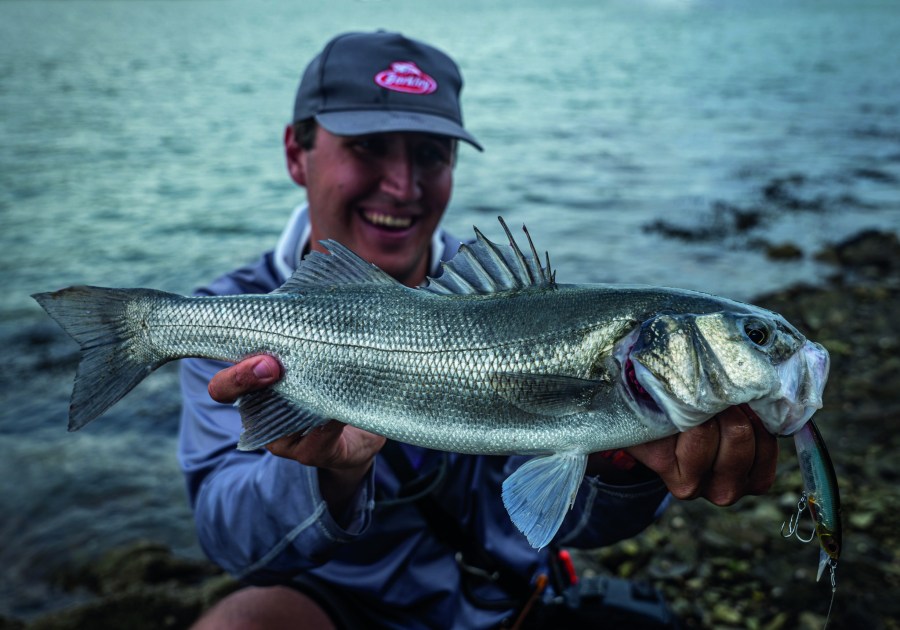Summer estuary lure fishing for bass can produce some red-hot sport. But what happens when the British weather throws a spanner in the works? Will Cooper provides his expert advice on tactics and lure choice for wind, rain or shine
Here in the UK, we are faced with a large range of weather conditions. Unfortunately, these are not always favourable for fishing, and the good weather often doesn’t coincide with the time you have available. However, many weather conditions can be overcome by small alterations in where and how you fish, as well as the lures you are fishing with.
This year, I have been using the new range of Berkley Dex lures for most of my estuary bass fishing. There is a large selection of models in the range, and each comes in a fantastic range of colours as well as being fitted with some quality saltwater hooks. Each one is unique, and many provide features that I haven’t seen in any other bass lure. Together, they cover all the different estuary marks, water and weather conditions that I fish in throughout the year. However, which lure I use at any given time will be very much influenced by the conditions I am fishing in.
HIGH WINDS
High wind speeds can often present challenges when estuary fishing. For example, head winds can drastically reduce casting distance, and side winds can make presenting many lures tricky. Therefore, before heading out on any session I’ll always look at the forecasted wind speed and direction. If possible, you should always try and find somewhere that is either out the wind or with the wind behind you: this will make presenting lures much easier. Estuaries will vary a lot in their topography and some spots will be a lot more sheltered than others; having several marks both within the same estuary and on different estuary systems can give you options to avoid strong winds. That being said, the wind can often be stronger than forecasted, or blow from a different direction. In this situation, altering the way you fish, and the lures you use, can help increase your success.
LURE SELECTION
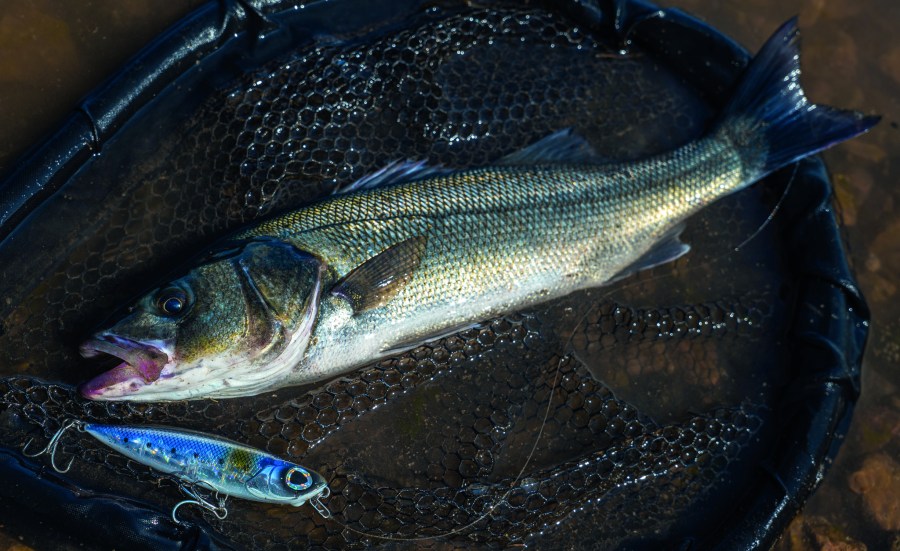
If you are faced with strong winds that you can’t get away from, I would start by considering your lure selection. Lures that you need to twitch and pause will be difficult to fish with, as the wind will constantly be creating slack in your line, making it more difficult to remain in contact with the lure and detect takes. Therefore, I would focus on lures that work well when fished with a straight retrieve, such as diving hard lures. These are a very simple lure to use but are extremely effective. By keeping a low rod tip and retrieving with a slow wind, you can reduce the ‘belly’ that the wind creates in your line. This will help you to keep better contact with the lure and improve its presentation. However, you do need to put some thought into which diving hard lure you chose.
Matching the appropriate diving hard lure to the ground that you are fishing can be influenced by several factors, but the most important is the depth of the water you are fishing. For example, if you are fishing a shallow rough ground mark, you don’t want a deep diver that will quickly become snagged. Equally, on a deeper clean ground mark you’ll probably want something that dives down a bit more. When fishing shallow ground, I would opt for a lure such as the Berkely Dex Longshot. These lures cast very well (especially the larger 140mm size) and dive to around 0.5m. On a deeper, clean ground mark (such as an estuary mouth), I would clip on the Berkley Dex Bullet Jerk. This lure dives deeper than most traditional bass hard lures and has high sides which keep it very stable in the water.
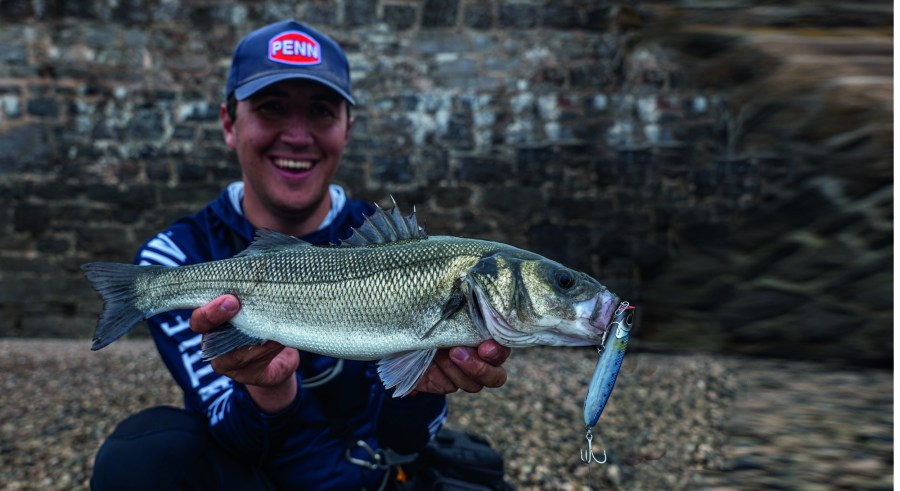
If the wind isn’t too strong, you can also try a surface lure. When using surface lures in windy conditions, it is likely that there will be a chop or swell on the water’s surface. This is an important factor to consider when choosing what surface lure you will use: you are going to want something that will hold well in this turbulent water and not get swamped. Lures that sit relatively low in the water and just walk left and right are likely to have their action impeded by the waves. Therefore, I would instead opt for a lure that you can work a bit more slowly, and that ‘spits’ or ‘pops’ in order to create a bit of commotion. Something like the Berkely Dex Strider would be perfect for this situation, and the heavier 120mm 20g version casts very well even in a stiff breeze. However, in some wave types, smaller lures can actually work very well too. This can often be the case when there is wind against tide, as this can create short, messy waves. If you are faced with a side wind, then standing with the wind hitting your back can help increase contact with the lure, as the wind will be pushing against the belly in your line which keeps it tight. Although many people will say to retrieve surface lures with a high rod tip, I would definitely keep it a bit lower when fishing in wind. This has no effect on your ability to work the lure, but it does help to reduce the belly in your line that the wind can create.
LOW WIND
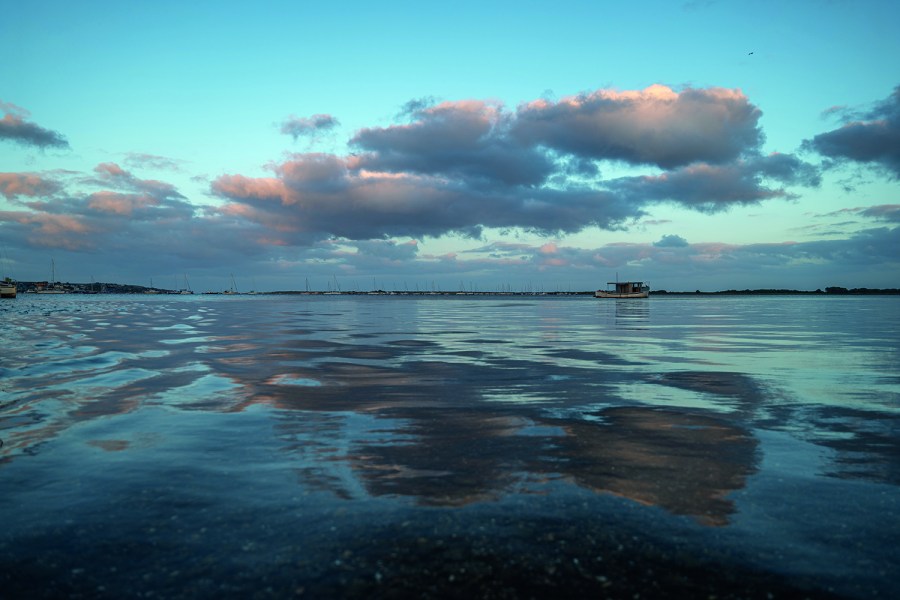
On days when there is little wind, it is likely that I will alter my lure selection. In still conditions you are likely to be fishing onto relatively calm water, and therefore don’t need to be as aggressive with your approach. Lures that make a lot of noise can often be a hinderance on calm days as they can easily spook fish, particularly in shallow water and smaller estuaries. When fishing with surface lures, I would opt for something that sits relatively low in the water and doesn’t make too much commotion. The Berkely Dex Mullet Walker would be ideal for these conditions, as its slalom left to right walk creates a lovely subtle action. It also casts like an absolute missile, so is the perfect option for covering a lot of water.
Another way in which I would alter my lure selection on calmer days is that I try and focus on using smaller lures. I personally believe that estuary bass, no matter their size, are often more willing to eat a small lure than a larger one. Many estuary systems are nurseries for small and juvenile fish, so it is likely that the bass will be used to feeding on small prey in these areas. Also, smaller fish are going to make an easier meal for a bass and therefore they likely going to be more confident when taking a small lure. This particularly applies to surface lures, and models such as the 90mm Dex Mullet Walker and Strider can be very effective, particularly in small estuaries. Changing to a small diving hard lure like the 80mm Dex Bullet Jerk can also be very effective, particularly when the fishing is tricky, or the fish are honed in on small prey items. Another one of my favourite hard lures for calm conditions is the Dex Stunna. This lure is relatively light, so it is best used on calmer days, but it has an awesome rolling slalom action. This creates a unique movement in the water, and it is an ideal lure for fishing on slow retrieves. It is also perfect in situations when you want to pause the lure, as its rolling action continues as it falls through the water.
RAIN
One type of weather that we certainly have no shortage of in the UK is rain. Rain not only affects how I fish in estuaries, but most importantly it affects where I fish. Any prolonged period of rain is going to push a large quantity of freshwater down the rivers and out into the estuary systems. As a species that tolerates a wide range of salinity, bass will normally venture high up estuary systems, right up to the boarder with freshwater. However, bass aren’t going to do this after a prolonged period of rain. Therefore, after rain, I will typically focus my efforts on marks closer to the coast. Another reason for this is that the freshwater coming out of the rivers is likely to be murky and reduce the water clarity of the estuary. The water on the coast on the other hand is likely to remain relatively clear and therefore provide better fishing.
DIRTY WATER
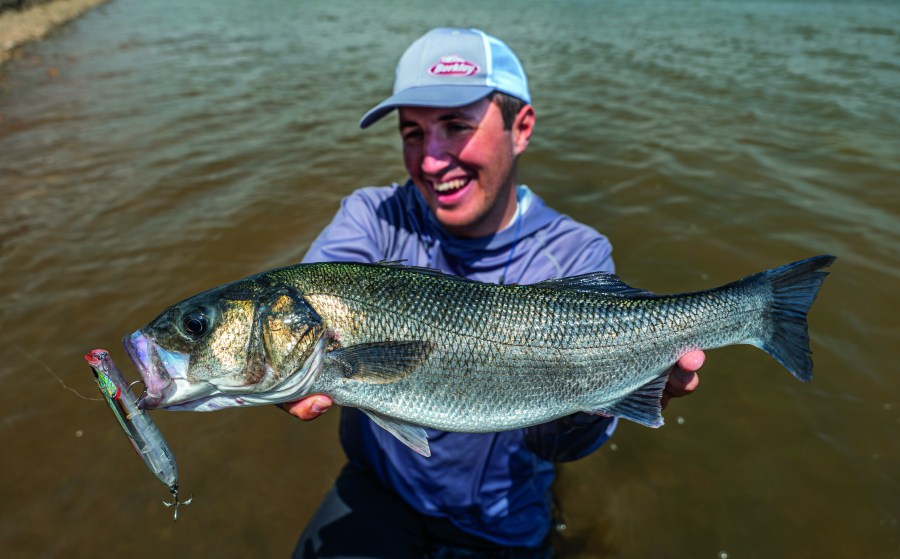
If you are fishing murky or dirty water there are several factors to consider when choosing your lure that can increase your chances of success. The first thing I would look at is colour. Brightly coloured lures are obviously going to stand out more against darker water, and colours such as pink and white would be my personal favourite as they are both bright and natural. However, other bright colours can also be really effective such as orange and chartreuse. If the water is just slightly murky rather than being completely coloured, then darker coloured lures such as black or blue can also be effective, as they create a silhouette which helps them stand out. If you know you are going to be fishing murky water, then it can help to fish on a day with lots of sun, as the extra light can help your lures to stand out a bit more.
The other major factor that I would consider when using lures in coloured water would be the noise they create. Lures that create a lot of noise can be detected more easily by bass and are therefore often a good choice. One way to create a lot of noise is using a surface lure that creates a popping or spitting action. Something like the Berkely Dex Strider would be perfect in this scenario, and I have had a lot of success fishing with this lure in these conditions. Another way to create a lot of noise is by using lures that have a loud rattle. Rattles are a fantastic way to create a lot of noise and can be found in most of the Berkley Dex range of lures. By twitching and jerking these lures, you can increase the noise that the rattle creates. The Dex Bullet Jerk is fantastic for this, as it is very stable in the water so doesn’t keel to one side as you work it.
CLEAR WATER
At the other end of the scale, sunny weather and calm conditions are typically associated with clear water. In a lot of places this can be associated with relatively bad fishing, but this is not always the case. In fact, I find that my local estuary will often fish at its best in very calm, sunny weather. In these conditions, lure colour can often be very important. Popular colours such as white and silver are always good to try, but one of my favourite features of the Dex range is the wide variety of natural colours. In very clear water, the sandeel or smelt colourways would be perfect, particularly if you are fishing over sand as there is likely to be an abundance of these prey species in this habitat. If you are fishing further up into the muddier parts of an estuary, then the mullet colour might be a great option, as the bass often chase the shoals of juvenile mullet around narrow creeks and inlets. If the water isn’t completely clear, then something like the incredibly popular cotton candy could well be a good choice.
ENJOY THE VARIETY

It is very easy to become frustrated with the infamous British weather, but we should also try to embrace the challenges it presents. Weather adds a whole extra dimension to the already long list of factors that as anglers we have to consider, such as tide, season and terrain. But with a bit of thought and experience, you can often find ways to fish around the weather, and you can even turn it to your advantage when trying to outwit your target species.

